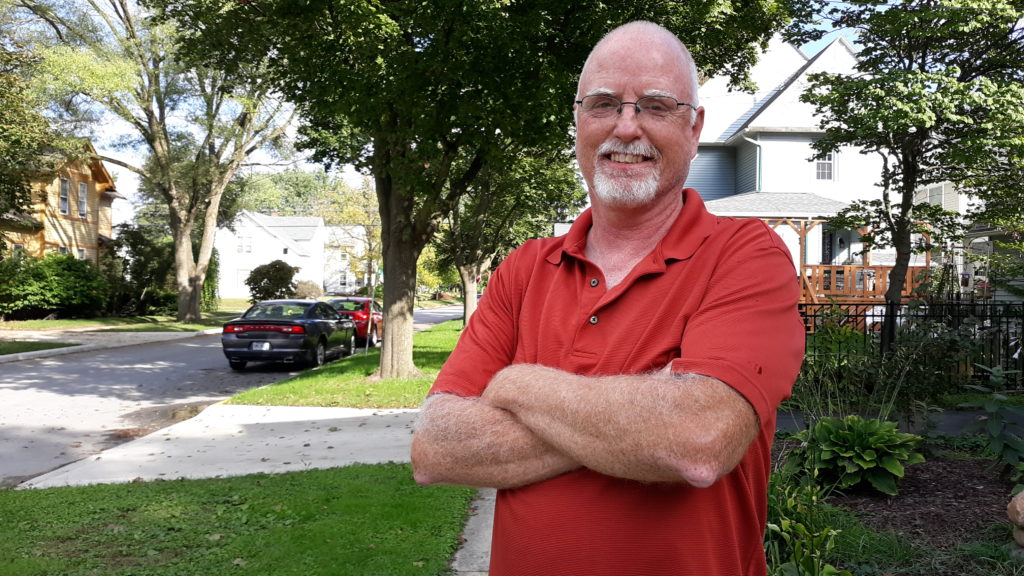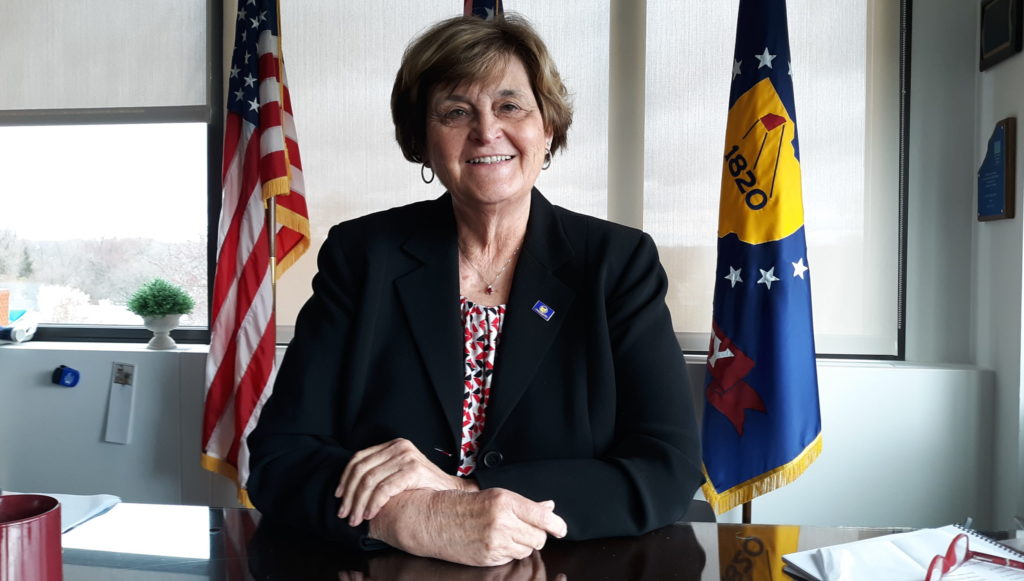By JAN LARSON McLAUGHLIN
BG Independent News
The two Republican candidates for Wood County Commissioner believe in public service. Incumbent Doris Herringshaw sees government’s role as providing services the public needs. Challenger Mark Hanson believes less government is what the public needs.
The race for county commissioner is the only contested local race on the primary ballot. Early voting is available in the Wood County Courthouse atrium up until election day on May 3.
The winner of the primary will then face Democrat Nick Pfleghaar, of Perrysburg, in the general election.
Both Hanson and Herringshaw have spent much of their lives in public service.
Hanson recently retired after serving as an officer with the Bowling Green Police Division for more than 25 years. He now works part-time as a constable in Wood County Juvenile Court. He has also worked for the Wood County Park District and Wood County Juvenile Detention Center.
Herringshaw served with the OSU Extension Service for 35-plus years, with her last position there working with commissioners from 10 Northwest Ohio counties. She has been a Wood County commissioner since 2012. She comes from a long line of elected officials – with her grandfather, father and sister-in-law serving as county commissioners in Seneca County, and her brother serving as a township trustee.

Hanson, who ran unsuccessfully last fall for Bowling Green City Council’s First Ward seat, said he decided to give elected office another try.
“The big reason is I enjoy public service,” he said.
Hanson believes his background in community policing would be helpful at the county level.
“You try to identify the issues the public is concerned with – then solve them,” he said.
For example, as a police officer he worked with residents of the First Ward in Bowling Green who were concerned about student traffic after the downtown bars closed. He helped form a Citizens on Patrol group that identified the problems, then police would “swoop in” and solve them, he said.
Hanson is concerned about the effect of rising inflation on Wood County – especially farmers.
“We’ve all seen the gas prices skyrocket,” he said. And rising fertilizer prices are making it difficult for farmers to break even.
“We may be looking at higher prices” and possibly a food shortage, he predicted.
“I think the commissioners office needs to lead the way in figuring out how to keep the farmers profitable,” he said.
Hanson suggested the county should create a commission working with farmers on supply chain issues, attracting a fertilizer plant to Wood County, and possibly scaling back property taxes for farmers producing food.
Hanson said the county should consider creating a storehouse for food.
“I believe hard times are coming,” he said. “I think we can be looking at food shortages.”
Hanson also believes the commissioners should be looking into global currency systems such as Bitcoin cryptocurrency and digital assets.
“I just don’t think the commissioners can ignore this trend,” he said.
Hanson’s Christian faith is the foundation of his life. He openly talks about his strong fundamentalist beliefs, and believes in freedom from unnecessary government regulations.
“I’m probably a little more conservative than Mrs. Herringshaw,” he said. “I believe in less government.”
Hanson said he would not have voted for a mask mandate at county buildings or any lockdown mandates.
“That cripples the economy,” he said.
Hanson believes government should not stand in the way of new businesses.
His economic development strategy is simple – “just saying ‘yes’ to new businesses.”
Hanson acknowledged he has an upward climb ahead of him.
“I’ve got a tremendous amount of respect for Mrs. Herringshaw. She’s been doing this for a long time,” he said. “I’m kind of a newcomer to this. It’s kind of a longshot.”

As president of the board of commissioners, Herringshaw has carried on the tradition of teamwork among public officials in Wood County. That collaboration is envied by commissioners in many other Ohio counties, she said.
“We can pick up the phone and say ‘Hey, we have a problem. How can we solve this?’” she said. “There are counties where commissioners don’t even speak together. We work together and respect each other.”
That collaboration between elected officials, manufacturers and BGSU has led to economic development successes in the county, she said.
“It takes collaboration of people working together to make it happen,” she said.
That teamwork also helped the county weather the COVID pandemic relatively unscathed.
“We were very quick to realize the situation,” Herringshaw said. The commissioners issued a mask mandate at all county buildings. “We tried our best to keep people working here. Our job is to help the public. How can we do that while protecting ourselves?”
Herringshaw’s favorite part of the job is problem solving.
“What gives me the biggest satisfaction is helping people solve their problems. Listening to what they have to say and linking them with resources.”
If returned to office, Herringshaw said she will continue to support the county’s efforts of training and certification of employees.
“Economic development has been phenomenal – but we have to have the workers,” she said. And that means providing training and housing options.
The commissioners office will also continue its role of helping to ensure that infrastructure, energy and zoning are ready for new economic development.
“Water and sewer is always an issue,” she said, noting that the commissioners recently approved the use of some COVID relief funds to extend water and sewer services to rural areas of the county.
The county continues to struggle with aging septic systems that are failing in rural areas. The solutions are never cheap, she said.
“But it’s something that’s good for Wood County. It’s good for the environment. It’s good for the lake,” she said.
And the commissioners will continue to work with local farmers on the state’s H2Ohio program aimed at reducing the amount of phosphorus running off fields into ditches and streams as they drain into Lake Erie.
“There are lots of farming practices already put in place that help that. We want to make sure it’s cost effective for them,” said Herringshaw, who grew up on a dairy, vegetable and grain farm in Seneca County. She vowed to never marry a farmer, then not only wed one but also raised one.
Herringshaw is also hopeful that the proposed expansion of the county jail will move forward during her next term.
“I’d like to think we’ll get that taken care of in the next four years.”
She foresees some of the county’s $25 million in American Rescue Plan Act funding to be spent on stormwater issues and on helping local towns with aging instructure.
“We are looking at long-term solutions that affect the most people positively,” Herringshaw.
Also, county officials hope to be prepared to use the federal infrastructure funding expected in the future. “Roads and bridges – those are never, never, never ending” needs in the county, she said.



